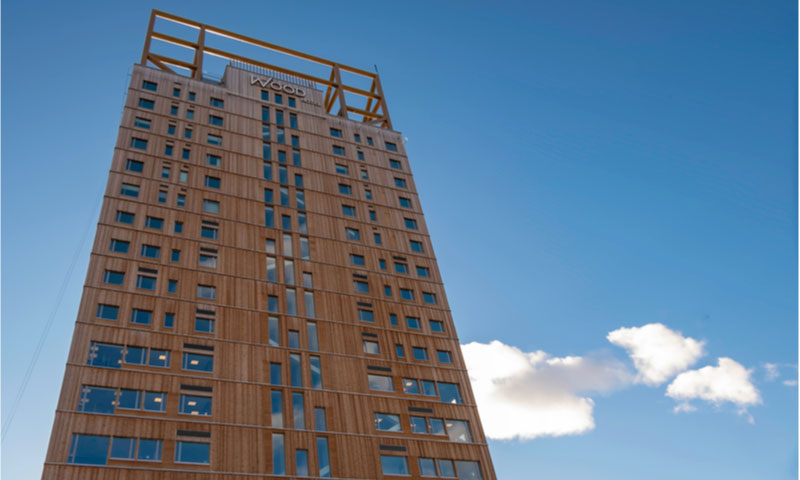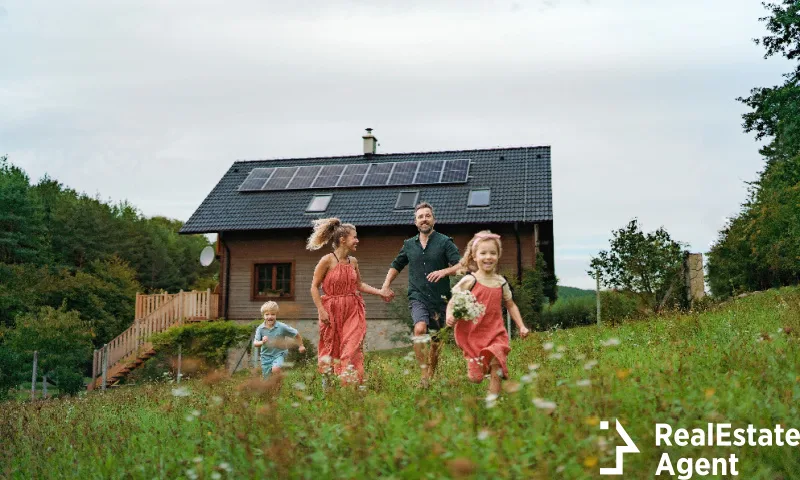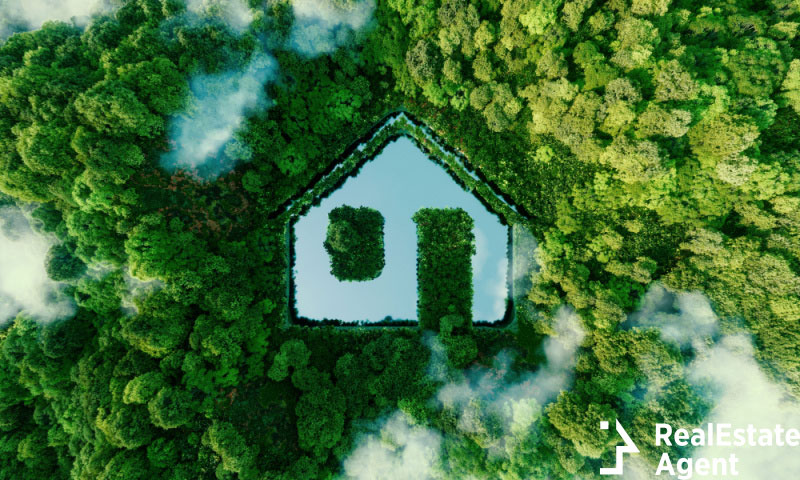Would you like to live in a treehouse that’s been updated to the latest housing technologies and architectural standards? Me too. But we aren’t talking about any old treehouse. You won’t actually be living in a tree, but in something that results from many trees. Let’s say you’ll live in a forest.
Now, we’ve all seen at least one house made out of wood, either a wooden cabin or a single-family detached house in the suburbs. While the first uses actual wood logs, the other uses manufactured wooden slabs for walls. When we mentioned that you’d be living in a forest we didn’t mean any of those two options. You can’t even assess it as a combination of the two. The first thing we can say about these types of buildings is that they should be seen as the future of the real estate industry.
Did you Say Wood Skyscrapers?!
Yes. That’s the simplest answer available. But of course, you’ll be thinking, how is that even possible? Well, architects and engineers from all over the world had been seeking alternative methods of building tall buildings. The reason behind this focus had been the environment.
We, as a society, have been molded into wanting more space. Take a look at the suburbs near your community or the one in which you live. You’ll see the large expanse of space dedicated to each individual household. If you look at cities, you’ll see tall buildings made out of concrete, steel, and glass. However, what you won’t see is the effect these types of buildings have on the environment. A GlobalABC report from the beginning of 2021 discovered that building operations and construction are culpable for 40% of energy-related CO2 emissions globally, making the real estate industry one of the biggest polluters. Metropolitan high-rise buildings carry the carbon footprints weight from both construction and maintenance. Suburban dwellings are culpable due to the suburban sprawl that they enjoy.
Architects and engineers have been looking for solutions to decrease the amount of CO2 emissions generated by the industry, while at the same time, limit that sprawl to create more dwellings on a smaller land area. That is how they discovered, or we should say rediscovered, one of the planet’s most renewable and sustainable materials … wood. But this wood isn’t plywood or anything that has been used before in construction. It is still wood, but the way in which it is used changes its properties completely.
Massive Timber and its Properties
If you haven’t heard of massive timber before, there’s nothing to worry about. Chances are, you’ll hear about it soon, as it might just take over the construction industry as we know it. Basically, massive timber is the sustainable solution the construction sector had been looking for. As its name suggests, it’s made out of large wooden slabs, but unlike in stick-frame constructions, it’s not one slab of wood, but several stacked crisscrossed one on top of the other. This crisscrossing way of creating each massive timber slab increases the wood durability, shock resistance, and fire resistance, while, at the same time decreasing costs, and carbon emissions. Massive timber can exceed the performance of more commonly used materials in constructions like concrete, glass, and steel.
Now, you’re probably thinking that it doesn’t make sense. Well, wood is pliable making it shock absorbent and flexible, but this gives it elasticity. When it comes to fire, yes, wood burns, but due to how these massive timber slabs are built, only the slab of wood exposed to fire will be affected by it. It turns black and its capacities are decreased, but it can be replaced. In an earthquake, a steel and concrete skyscraper is easily affected if it doesn’t have some serious anti-shock mechanism, while a massive timber skyscraper will move, shake, your furniture might wind up in another place, but the mass timber’s endurance will keep the building standing. In a fire, steel loses its endurance as it is exposed to heat, while concrete cracks, but massive wood might have the part exposed to fire affected but the rest is protected by the part that is exposed to fire.
All in all, massive wood, checks many of the boxes needed for the construction industry’s future. There are already buildings that have been constructed with the use of this technique. You can find them all over the planet, even if they aren’t all skyscrapers, but the technique is available across the globe, for one simple reason. Unlike the other sustainable material, bamboo, you can find wood in most parts of the world. This new age of the building sector will also motivate the whole real estate industry to get behind reforestation as it will supply their #1 material. Homes will be cheaper, forests will be grown and profit would be made. It’s a win, win, win situation.
Wooden Skyscrapers Around the World
The material’s availability makes it easy for any country, from the most developed to the least, to apply this type of building method. The technique is easy to implement and the material is plentiful. There are two simple technologies that are applied through this building method. Cross-laminated Timber (CLT) and Laminated Veneer Lumber (LVL). Either of these methods uses limited amounts of steel for elevator shafts, stairways, and connections. Everything else is made entirely out of wood. That is why we can see these babies popping up all over the world.
Skelleftea, Sweden
This 20 -story wooden tower is located in northern Sweden and, true to the Scandinavian way of life, it houses a library, a hotel organized to host art expositions, meetings and concerts, and six theater stages for anyone to enjoy. The 260-feet high building had been planned as the home and center for Skelleftea’s culture. It all started from the city’s drive to not only survive the 21st century but grow towards a better future. The city’s 33,000 residents thrive on the city’s biggest industry – forestry -which supplied all the wood necessary for the construction. But that’s not all. The building’s complete sustainability is based on solar panels, batteries, and connections from the district’s heating, electrical and water grid to power the building’s heat pump. Even the sprinkler system is powered by renewable energy.
Brumunddal, Norway – Mjøstårnet tower
The 18-story building towers over the nearby Mjøsa lake, having access to amazing views of the surrounding area for those living in the apartments available. With 280-feet in height, it is the tallest wooden building in the world located in a Norwegian city with around 10,000 residents. Also within this building, those visiting the area can be accommodated at the fittingly named Wood Hotel, and maybe look at job openings for the office space available inside the building. This wooden structure didn’t only put the small town of Brumunddal on the map, but it also pushed the wooden skyscraper’s boundaries to the limit.
Vancouver, Canada – Brock Commons
Vancouver’s timber building used to be the tallest in the world, but that throne has been ceded to Norway. Canada’s major city of Vancouver proudly presented its 173-feet tall wooden skyscraper in 2017. It’s no wonder that it’s not the tallest wooden building in the world anymore, but it did shock and awe at the time. It’s home to the student’s residences and accommodates around 400 students throughout the school year.
Now for What the Future Holds
If you think those wooden skyscrapers are tall, wait till you hear what architects have in store for the following years.
Chicago, Illinois – River Beech Tower
The US isn’t one to shy away from a challenge, especially if it has to do with size. That is why the River Beech Tower became a focus for Chicago’s architects and engineers. The tower is designed to be an eighty-story tall residential building, with around 300 duplex units and multi-story communal spaces. Presumed height is expected to reach 800-feet.
London, England – Oakwood Tower
While this project is still in the research phase, many Londoners are already planning ahead to a romantic evening spent with London’s best skyline view. This spear-shaped wooden skyscraper, also dubbed plyscraper, will tower high above the city’s Barbican Estate residential complex at heights of 1017 feet. Not much is known about the project, but it’s meant to become the tallest building in the European Union, regardless of materials being used.
Conclusion
While many people consider that wood is not a sustainable material, the simple fact that we can grow it over the years and we can plant as much as we want contradicts that logic. A less sustainable option is the one we use today. We burn steel, we make concrete and aside from polluting the environment through the process, we ensure that no CO2 is eliminated from the atmosphere. Switching to wood will fix all of those problems.
However, there is a problem. Wood is available and nobody can have a monopoly on this material. Its price can not be regulated by the will of the few and the short supply available. Hopefully, we as a society can overcome greed and do things that will benefit everyone in the long run, and implement environmental planning practices in the future.
Let us know in the comments below what your thoughts are on wooden skyscrapers. Would you live in one? Do you believe they are sturdy enough? Can they take over the construction sector and provide a sustainable economy at the same time? Like & Share this article with friends and family that might be curious about the advancements made in the real estate industry for a sustainable future.












